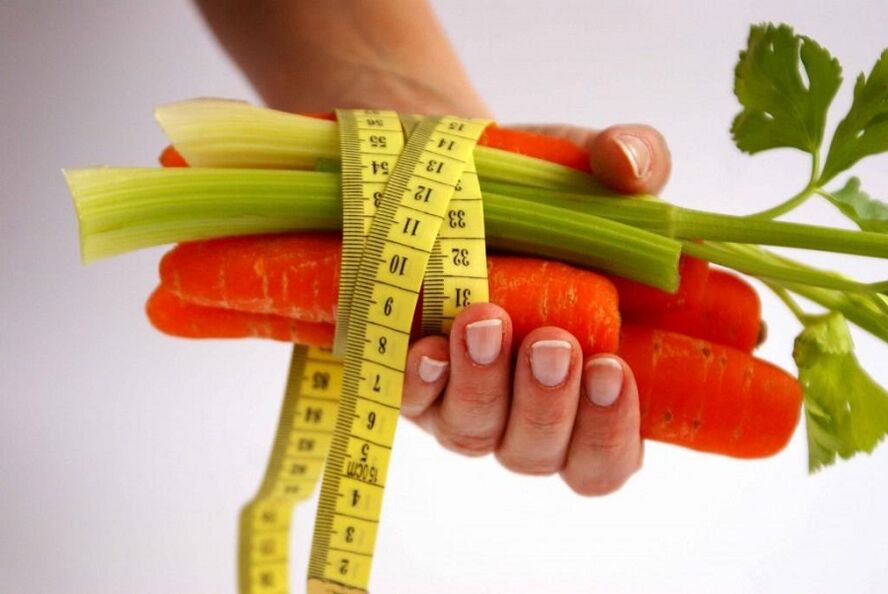Fasting days, diets, nutrition programs - what methods are used by the fair sex. Few succeed in gaining a beautiful and slender figure in a short time and consolidating the result obtained, but this is quite real. The popular all over the world Japanese diet for 14 days, the menu of which is diverse and simple, is considered one of the most affordable and effective. Japanese women are a vivid example of this - they always differ not only in a good figure and good health, but also look younger than their age. They believe that the main secret of this is a two-week course, compiled by professional nutritionists.
What is special about the Japanese diet?
Despite the fact that the diet is called the land of the rising sun, it is suitable for people living in different countries. It is believed that this nutritional system was developed in one of the Tokyo clinics and this is the only thing that makes it related to Japan.
The main characteristics of any diet are the timing for which they are designed and the products that are used to compose the diet. The Japanese diet belongs to the category of universal - the dishes are very simple and you can always find everything you need in the nearest supermarket or retail store.
A distinctive feature of this diet is moderation in everything: in the set of permitted foods, portion sizes, and their calorie content.
Rules and principles of the Japanese diet. Pros, cons and contraindications!

Any diet, like fasting, is a severe stress for the whole organism. That is why, so that losing weight does not lead to health problems and leads to the desired results, it is very important to strictly follow the recommendations and follow certain rules.
Basic principles:
- Mandatory preparation - a positive attitude and rest the day before;
- Duration - 14 days;
- Diet - 3 times a day;
- Menu - low-calorie, low-carbohydrate, protein;
- Result - up to 8 kg in 14 days;
- Restrictions - no more than 2 times a year.
Rules and recommendations:
During the diet, the metabolism changes dramatically, which can lead to a slight disruption of some body functions. That is why it is very important:
- Strictly adhere to the recommended menu. You cannot substitute some products for others, and you should also not change the amount of ingredients by reducing or increasing portions.
- During the entire period of the diet, you should drink at least 1. 5 liters of water. Allowed: mineral (not carbonated), boiled, spring water.
- Drink 200 g (a glass) of warm water every morning on an empty stomach.
- The use of alcoholic beverages, salt, sugar and flour products is prohibited.
- The last meal is 2-3 hours before bedtime.
- From the first day until you exit the diet, you should take a multivitamin.
Pros and cons:
- The advantages of this diet include: availability, simplicity and efficiency. Subject to all the rules, the achieved result is maintained for several years.
- The only drawback of a two-week weight loss course is the strictness of the diet. Violation of one of the rules can lead to a violation of the entire cycle. If for some reason you get lost, start over from the next day.
Contraindications for use:
Avoid dieting during pregnancy, the postpartum period, or while breastfeeding. At this time, the female body needs additional resources.
This weight loss option is not suitable for athletes and those who are engaged in physical labor. Since the products are quite low in calories, it is undesirable to go on a diet in the postoperative period and during rehabilitation.
Contraindications include: chronic heart and kidney disease, gastrointestinal disturbances, gastritis, ulcers.
A slight malaise, headache and general weakness during the diet indicate that your body is not able to cope, and this option for losing weight is not suitable for you. In this case, the diet should be stopped immediately.
Menu creation and grocery shopping

Before starting a diet, it is advisable to undergo an examination and consult a doctor. If there are no reasons and contraindications, then it's time to start preparing. Since the diet is quite strict, it is advisable to draw up a menu in advance and purchase the necessary products. This will help protect yourself from the temptation to break the regime.
Try to limit the amount of sweets and fatty foods the day before starting the diet. To make it easier to start, it is advisable to have a good night's sleep and rest the day before.
For the diet to be even more effective, you must be mentally prepared. Only positive emotions and positive mood will help you achieve the desired results. If you are not ready, postpone the beginning of the diet the next day, but in no case do not force yourself, otherwise all efforts will be wasted.
List of required products:
- Chicken fillet (breast) - 1 kg.
- Chicken egg - 20 pcs.
- Not fatty beef - 1 kg.
- Sea fish (any), fillet - 2 kg.
- Lemon - 1 pc.
- White cabbage - 2 pcs.
- Carrots - 3 kg.
- Zucchini or eggplant - 1 kg.
- Tomato juice (not salted) - 1 l.
- Kefir - 1 l.
- Any fruit (except grapes and banana) - 1 kg.
- Ground black (beans) coffee - 1 pack.
- Green tea without additives - 1 pack.
- Olive oil (cold pressed) - 0. 5 l.
All products should be of good quality, vegetables - fresh, dairy products are best bought on the day of the diet or in advance in the evening.
Coffee and tea should be natural, insoluble.
Vegetables can be cooked in any quantity, so you can buy them if necessary.
In addition to these foods, you should have a lot of liquid in your diet, small amounts of rye bread and hard cheese are allowed.
Full menu for 14 days
Be sure to drink a glass of water before breakfast every day, so prepare it well in advance. Drink hot drinks without sugar; the addition of honey and milk is unacceptable. During the day, you can drink water without restriction, but snacks should be excluded.
Day 1
- Breakfast: A cup of coffee or tea (no milk / sugar).
- Lunch: Boiled eggs (hard boiled) - 2 pcs. Boiled or raw cabbage salad with olive oil - unlimited. Tomato juice - 1 glass. The drink can be substituted with 2 fresh medium-sized tomatoes.
- Dinner: Fish fillet (fried / boiled) - 200 g. Fresh cabbage salad with oil - no limits.
Day 2
- Breakfast: Natural black coffee, 1 unsweetened crouton can be used.
- Lunch: Boiled fish - 200 g, fresh cabbage or stewed with butter.
- Dinner: Boiled beef - 100 g, kefir - 1 glass.
Day 3
- Breakfast: A slice of rye bread (croutons), a cup of coffee or tea.
- Lunch: Fried zucchini or eggplant (unlimited).
- Dinner: Boiled beef - 200 g, cabbage and butter salad, boiled egg - 2 pcs.
Day 4
- Breakfast: Carrot salad (season with lemon juice).
- Lunch: Boiled fish - 200 g, tomato juice - 1 glass.
- Dinner: Fruit - 200 g.
Day 5
- Breakfast: Carrot salad (season with lemon juice).
- Lunch: Boiled fish - 200 g, tomato juice - 1 glass.
- Dinner: Fruit - 200 g.
Day 6
- Breakfast: Coffee or tea.
- Lunch: Boiled chicken; salad of cabbage and carrots with vegetable oil.
- Dinner: Boiled egg (hard-boiled) - 2 pcs. fresh carrots - 1 pc.
Day 7
- Breakfast: A cup of green tea.
- Lunch: Boiled beef - 200 g, Fruit - 200 g.
- Dinner: Choose from one of the previous days' dinners (except day 3).
Day 8
- Breakfast: Natural green tea.
- Lunch: Boiled chicken - 500 g, Fresh carrot and cabbage salad - unlimited.
- Dinner: Boiled eggs - 2 pcs. Raw carrots with vegetable oil - 200 g.
Day 9
- Breakfast: Season carrots raw (grated) with lemon juice - 1 pc.
- Lunch: Boiled or fried fish - 200 g, tomato juice - 1 glass.
- Dinner: Fruit - 200 g.
Day 10
- Breakfast: Natural coffee.
- Lunch: Boiled egg - 1 pc. Carrots with vegetable oil - 3 pcs.
- Dinner: Fruit - 200 g.
Day 11
- Breakfast: Natural coffee. Rye croutons - 1 pc.
- Lunch: Eggplant or zucchini (unlimited).
- Dinner: Boiled beef - 200 g. Boiled egg - 2 pcs. Fresh cabbage with vegetable oil - no restrictions.
Day 12
- Breakfast: Natural coffee with croutons.
- Lunch: Boiled or fried fish - 200 g. Fresh cabbage with oil - no limits.
- Dinner: Boiled beef - 100 g. Kefir is not fatty - 1 glass.
Day 13
- Breakfast: Natural coffee.
- Lunch: Boiled eggs - 2 pcs. Boiled or raw cabbage with butter. Tomato juice - 1 glass.
- Dinner: Fish (steamed, boiled, fried) - 200 g.
Day 14
- Breakfast: Natural coffee.
- Lunch: A portion of boiled or fried fish - 200 g. Fresh cabbage with butter.
- Dinner: Boiled beef - 200 g. Kefir - 200 g.
Exiting the diet
After a two-week restriction on food, it is very important to get out of the diet properly. This will help not only to consolidate the result, but also help the body to smoothly overstate. For 3-5 days, continue to limit yourself to sweets, do not abuse salty foods and alcohol. Introduce new foods that were not on the diet menu gradually, in small portions.
As you can see, the classic Japanese diet for 14 days, the menu and rules of which are given above, is a simple and quick way to get slimmer without much effort. It is harmless and safe for health, however, it should be remembered that it will be possible to carry out a turning course of weight loss in 6-7 months, when your body finally gets stronger and gets used to a new diet.




























